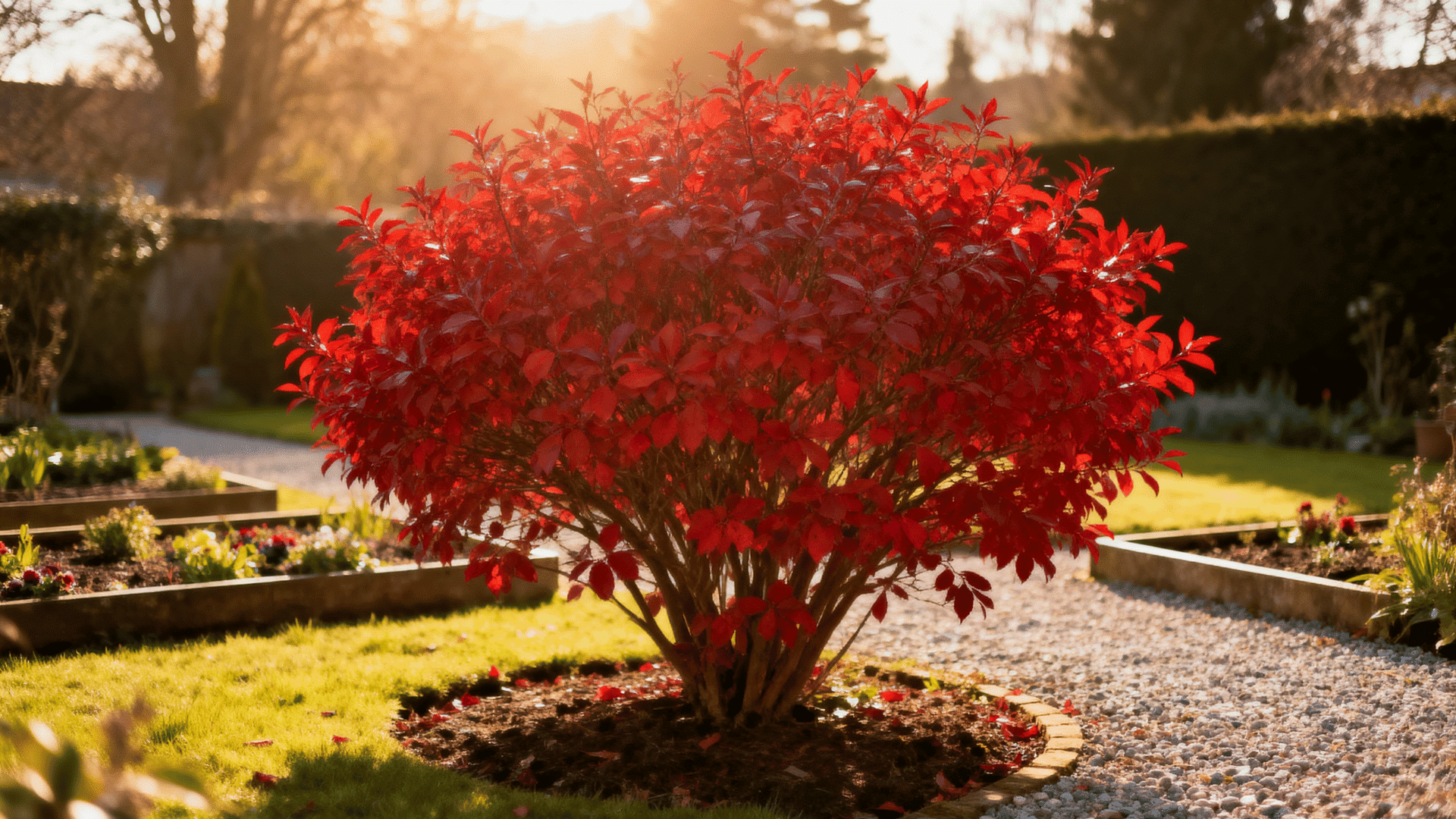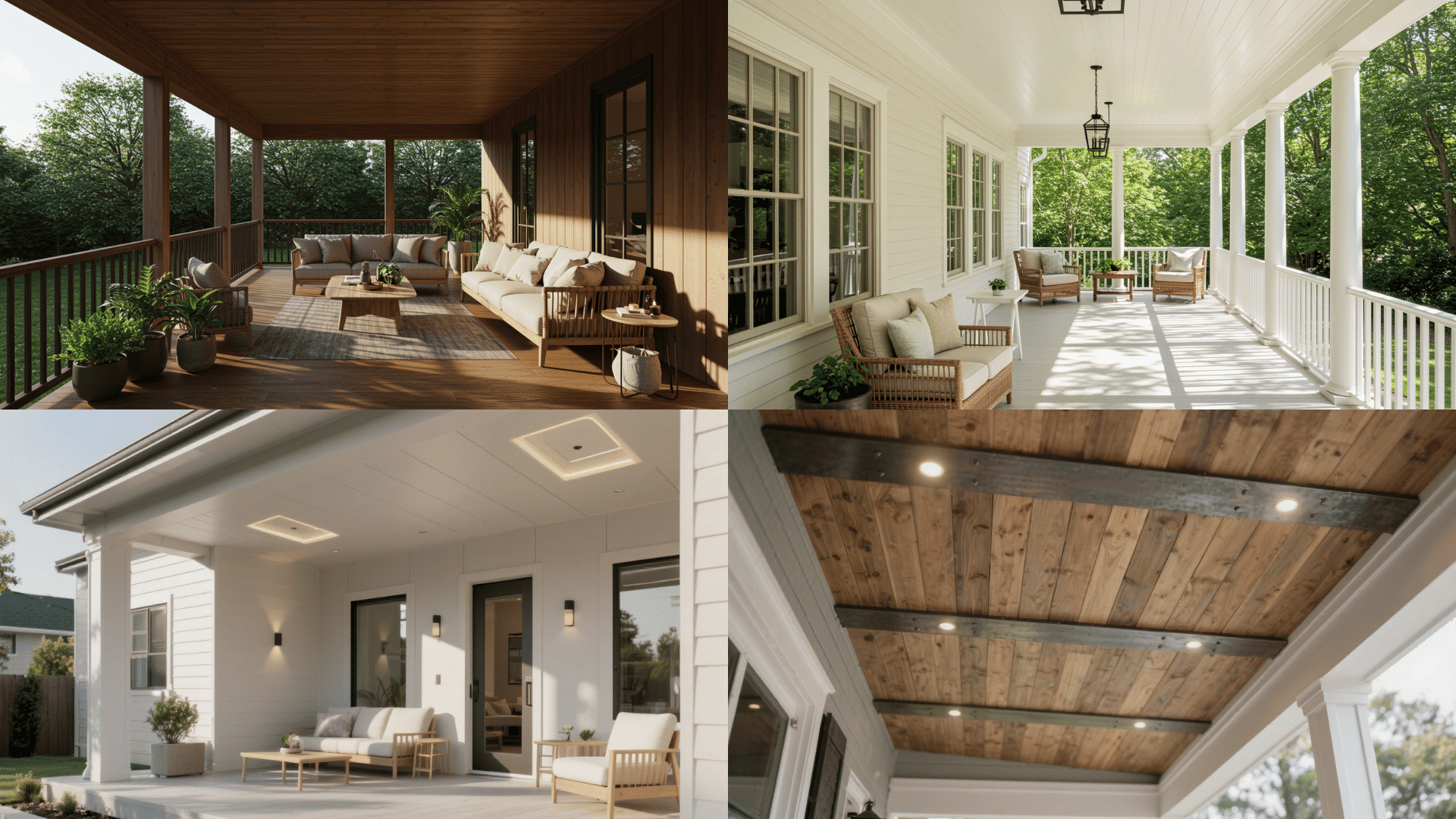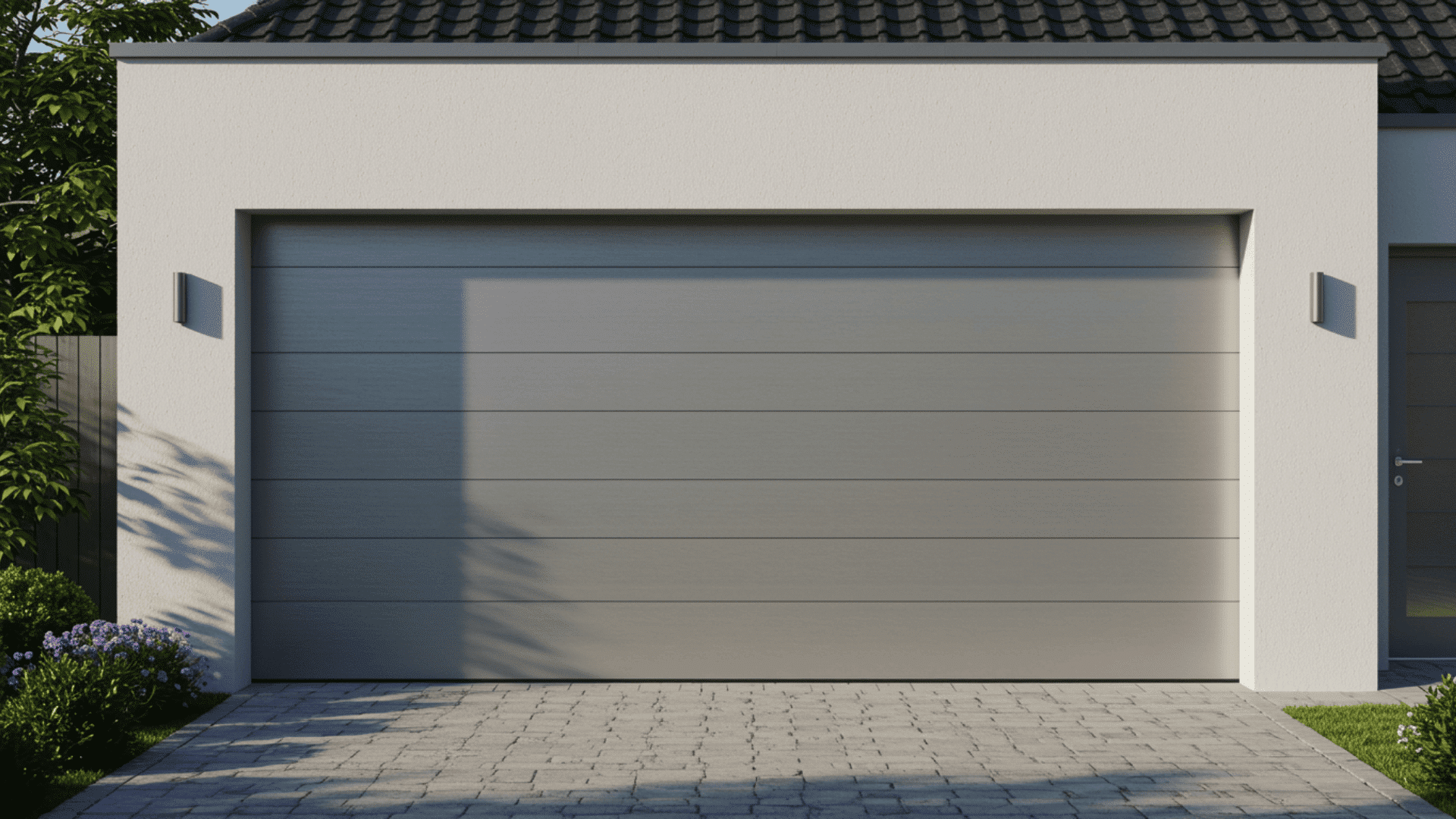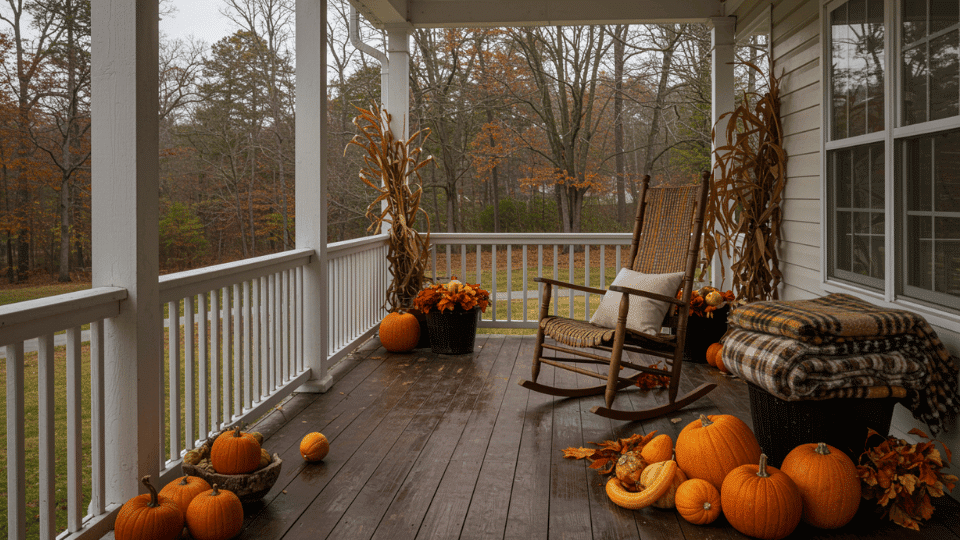Timing makes all the difference with plants, and a burning bush is no exception. Trim it at the right moment, and it rewards the effort with bold color and healthy growth.
Knowing when to trim burning bush keeps its shape neat and its branches strong year-round. Pruning at the proper time encourages fuller leaves and brighter fall color.
It also helps prevent overgrowth that can make the shrub look tired. A little care at the right time can turn any yard corner into a striking, fiery display.
Signs That Your Burning Bush Needs Pruning or Trimming
A burning bush usually grows with little effort, but even the hardiest shrubs show signs when they need care. Spotting these clues early helps determine when to prune burning bush for better color, shape, and strength.
- Overgrown branches crowd nearby plants, block sunlight, and steal nutrients that other parts of the shrub need to grow evenly.
- Sparse lower leaves reveal that sunlight isn’t reaching the center, leading to thin, patchy growth that makes the bush look uneven.
- Crossing stems rub together, creating wounds that invite pests or diseases if not trimmed on time.
- Dead or damaged wood weakens the structure and prevents new growth from filling in healthy foliage.
- Faded fall color shows that the plant’s energy is spent, and careful pruning can help restore its bright red glow.
When Should You Trim Vs Prune?
Knowing when to trim and when to prune burning bush helps maintain its natural shape and vibrant color.
Trimming is best for light shaping, usually done in early spring or mid-summer to remove small shoots and keep a tidy form.
Pruning, on the other hand, involves heavier cuts to remove old, damaged, or crowded branches, best done in late winter or early spring before new growth starts.
Both steps work together, trimming maintains appearance, while pruning supports health and structure. Using the right method at the right time keeps the burning bush looking bold and balanced.
Tools and Materials Needed
Before beginning pruning, make sure that all the supplies are ready. Having the right tools and materials on hand will make the work faster, easier, and more enjoyable.
| Tools | Purpose |
|---|---|
| Pruning shears | For cutting small stems and branches cleanly |
| Loppers | To handle thicker or hard-to-reach branches |
| Pruning saw | For removing large or old wood sections |
| Gloves and goggles | To protect hands and eyes while cutting |
| Disinfectant or rubbing alcohol | To clean tools between cuts and prevent disease |
Steps to Prune Burning Bush
Pruning keeps a burning bush healthy, colorful, and well-shaped year after year. Knowing when to prune burning bush is only half the job; doing it right makes the real difference.
Step 1: Start with Dead or Damaged Branches

Begin by cutting away dead, broken, or diseased wood. This prevents infection and gives the shrub more energy for healthy growth.
Removing unhealthy branches first makes it easier to see the natural shape and helps decide when to trim burning bush for best results.
Always make clean cuts close to the branch collar for faster healing.
Step 2: Thin Out Crowded Areas
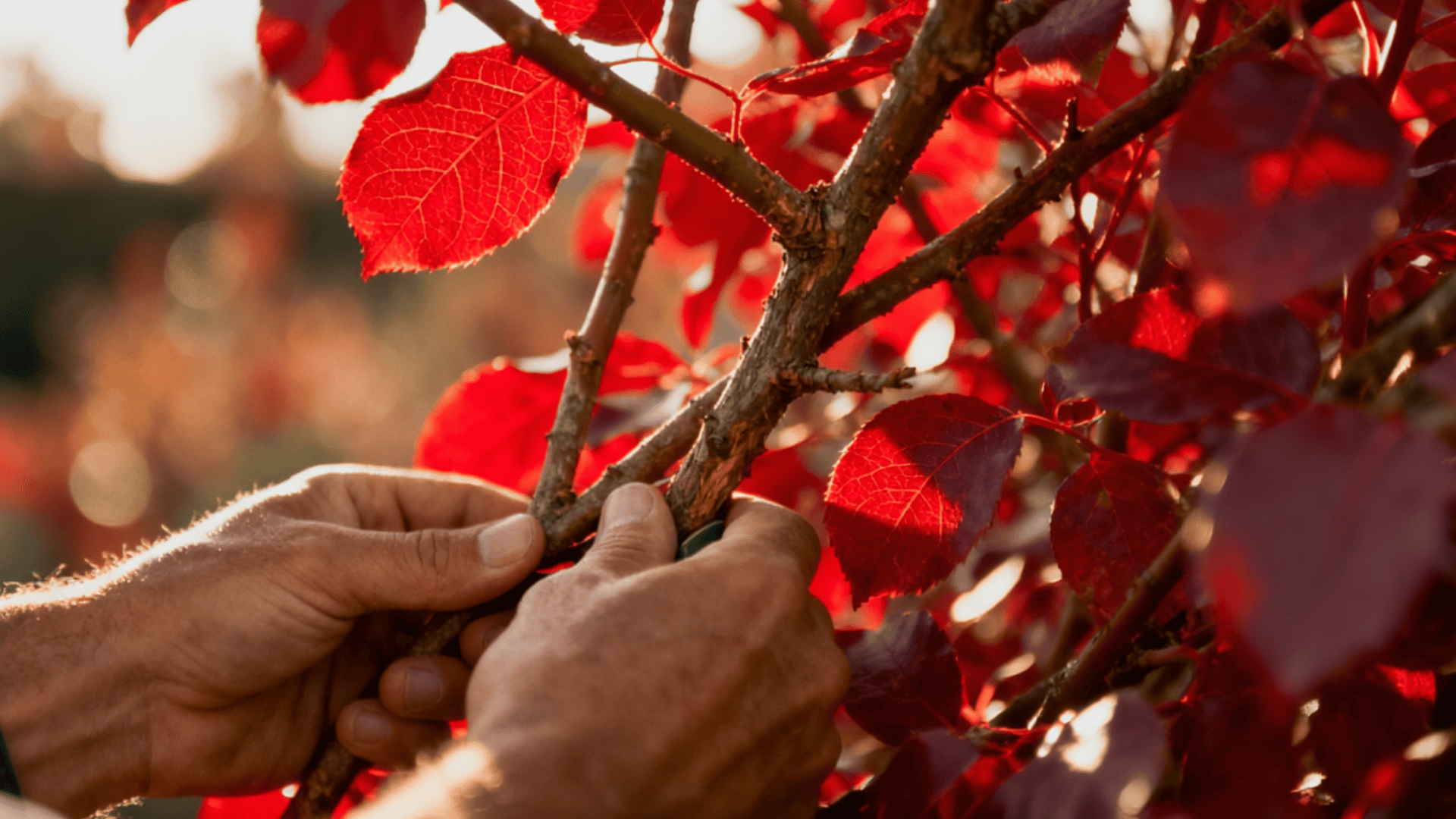
Look for branches crossing or growing inward. These block sunlight and reduce airflow, which can cause weak growth.
Removing them opens up the center, allowing air and light to reach every part, keeping the bush balanced and strong also leave enough space between main branches so the shrub can breathe easily.
Step 3: Shape the Shrub Evenly

Use short, angled cuts to maintain a rounded or natural form. Keep the bottom slightly wider than the top so sunlight reaches lower leaves.
Regular shaping also helps determine prune burning bush next season for continued growth. Step back often to check that both sides look balanced and natural.
Step 4: Clean Up and Care After Pruning
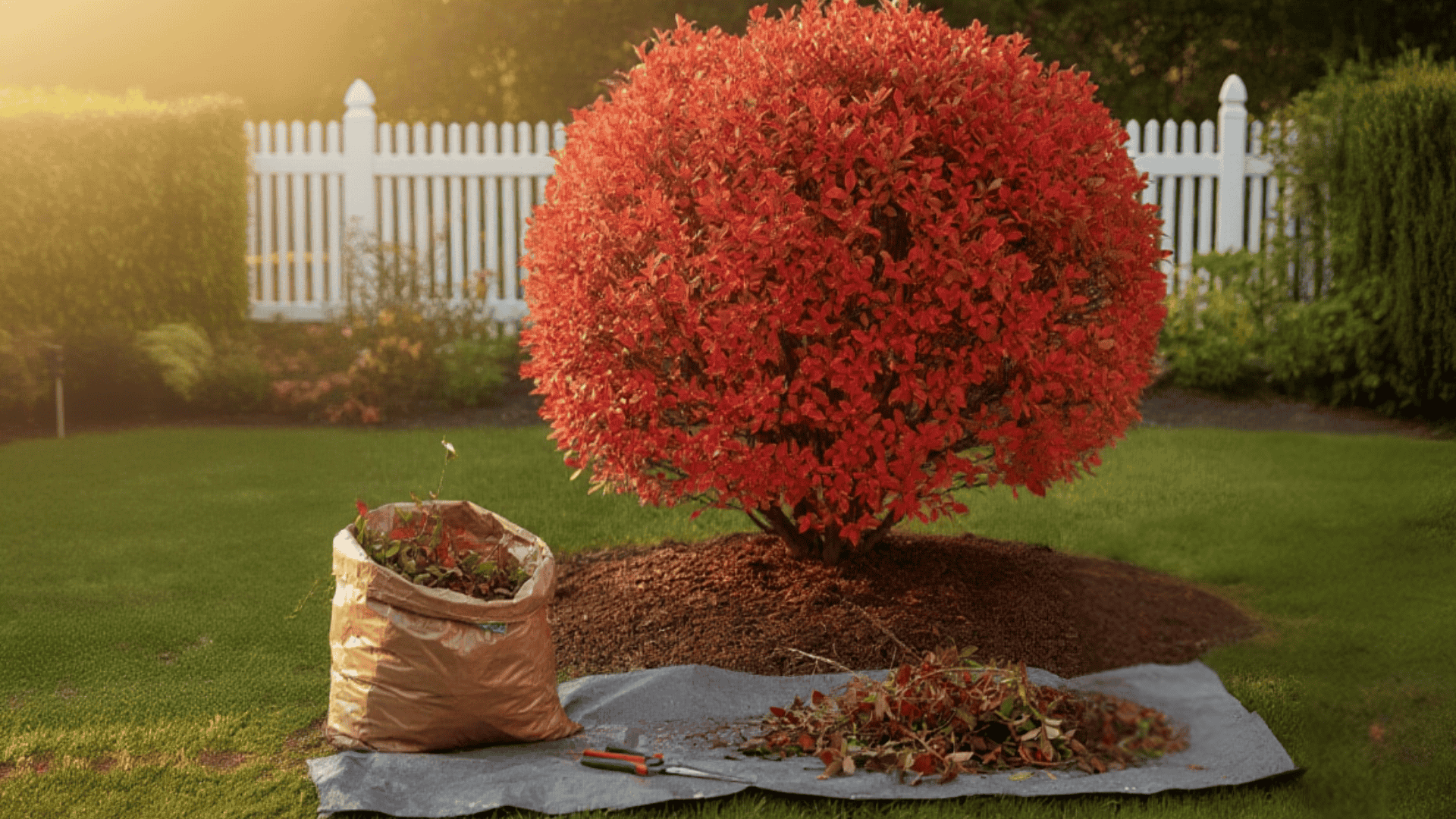
Clear fallen branches and debris around the base. Water the plant deeply and add mulch to lock in moisture. Clean and disinfect tools before storing to prevent spreading disease to other plants.
A final check of the shrub ensures all cuts are clean and that no weak branches remain.
Types of Burning Bush Pruning and When to Do Each
Different pruning methods help a burning bush stay healthy, shapely, and colorful through the seasons. Each approach fits a specific goal, whether it’s light upkeep or a full renewal.
1. Light Maintenance Pruning
This type keeps the bush tidy and well-shaped without stressing the plant. Use clean shears to snip small shoots and control size.
- When to Do: Early spring or mid-summer after growth slows.
- How Often: Once or twice a year.
- When to Stop: Avoid late-summer trimming to prevent frost-sensitive growth.
2. Routine Annual Pruning
Annual pruning maintains strong structure and healthy growth. Remove weak stems, open the center, and keep a balanced shape every year.
- When to Do: Late winter to early spring before new buds form.
- How Often: Every year as part of regular care.
- When to Stop: Once the bush shows even, healthy growth from base to tip.
3. Thinning Pruning
Thinning reduces overcrowding and improves air circulation. Cut back inner branches and remove any that rub or twist together.
- When to Do: Late winter or early spring before leaves appear.
- How Often: Once a year or as needed for dense growth.
- When to Stop: Stop once sunlight and air reach all inner branches.
4. Rejuvenation Pruning
Rejuvenation pruning brings old shrubs back to life. Cut about one-third of the oldest stems near the ground to spark new growth.
- When to Do: During late winter dormancy.
- How Often: Every 2–3 years for mature shrubs.
- When to Stop: When new, healthy shoots fill out evenly.
5. Severe Renovation Pruning
This method is for extremely overgrown or neglected burning bushes. Cut all stems down to 6–12 inches from the ground to reset growth completely.
- When to Do: Late winter or very early spring.
- How Often: Once every several years when the bush loses shape or color.
- When to Stop: After regrowth becomes full and balanced.
6. Corrective Pruning
Used to fix damage or uneven shape after storms or pest issues. Remove dead or misshaped wood to restore structure and balance.
- When to Do: Whenever damage is visible, except in freezing weather.
- How Often: Only as needed.
- When to Stop: When the plant’s form and health are fully restored.
7. Seasonal Shaping
Seasonal shaping keeps the burning bush looking tidy during its growing months. Trim lightly around the edges to maintain an even, rounded outline.
- When to Do: Early summer after main growth flush.
- How Often: Once each growing season.
- When to Stop: After mid-summer to protect fall color.
Proper pruning ensures lasting health and beauty. Using the right method and knowing best time to trim burning bush keeps its structure strong and its red color bright every year.
When Not to Prune Burning Bush
Pruning is helpful, but doing it at the wrong time can harm the plant’s health or ruin its seasonal beauty. Understanding when to prune burning bush also means knowing when to wait.
- Avoid pruning in late fall after leaves drop, as fresh cuts can cause new, tender shoots to form that won’t survive winter frost. These weak stems often die back and leave the shrub looking patchy in spring.
- Skip pruning during heat waves, since cutting in hot, dry weather stresses the plant and leads to moisture loss. This can cause wilting or scorched leaves and slow recovery.
- Do not trim right after the spring flush, because new growth at that time helps the plant build strength. Removing fresh leaves too soon reduces energy for healthy growth.
- Wait to prune during drought or sickness until the plant regains health. Pruning a stressed shrub can damage its roots and weaken recovery.
- Avoid heavy trimming before or during the leaf show, as this can remove the best-looking leaves and spoil the bright red color of fall.
Seasonal Pruning Calendar for Burning Bush
Timing pruning by month helps people stay on track and avoid damaging new growth. Understanding when to prune burning bush through the year ensures steady growth, bold color, and a well-shaped form.
| Season / Month | Pruning Activity | Notes |
|---|---|---|
| Late Winter (Feb–March) | Heavy pruning, rejuvenation | Best done before buds break for quick recovery |
| Early Spring (March–April) | Routine maintenance, shaping | Ideal window for balanced growth and structure |
| Late Spring (May) | Wait for growth flush | Avoid pruning to let new shoots mature |
| Summer (June–July) | Light shaping only | Trim lightly after spring growth to maintain form |
| Late Summer (August+) | Stop all pruning | Allow branches to harden before cooler weather |
| Fall (Sept–Nov) | No pruning | Enjoy fall color; cutting now weakens the plant |
| Early Winter (Dec–Jan) | Planning only | Too cold for cuts; prepare tools and pruning plan |
The Bottom Line
People know that small, timely actions can make a big difference. Learning when to trim burning bush helps it stay bold, bright, and healthy through the seasons.
A well-timed trim shapes the plant, protects its color, and keeps growth under control without extra effort. With a little care and the right timing, any yard can enjoy the fiery beauty this shrub brings.
So take a look at your burning bush, plan your next trim, and give it the attention it deserves. It will return the favor with vibrant color and lasting charm.

